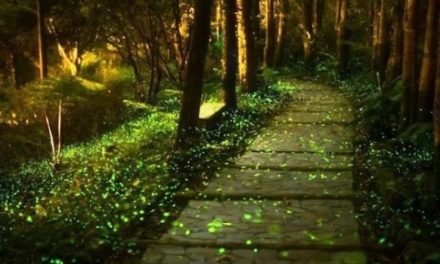Living in the Lowcountry means having lots of visitors. Recently my nephew and his family of six spent some time here. When my son and his family showed up the number went to ten! We truly loved having them here and it was so special for us all to be together; the week flew by and it all seemed effortless. Other guests are not so welcome however.
This morning as I looked out the window I saw a family of deer eyeing the garden. There was a doe and what I think might have been a young buck along with their triplets and they were intensely studying the buffet before them. I quickly ran out and attempted to scare them; the doe and the fawns scattered, but the larger one – the one I think was the male – just stood there daring me to come closer. I lobbed pinecones at him and after a while he tired of the game and sauntered off to join his family. These are the kind of arrogant visitors I detest.
Not a week goes by that the Master Gardeners don’t get a question or two about how to keep deer away. Everyone wants to know about deer resistant plants. I want to know that too. All I do l know for certain is that a hungry deer will eat whatever is available. A neighbor called me over to see her deer ravaged Burfordii hollies; the top branches were shredded. Burfordii’s are very tough plants, the leaves are like hard plastic and they have very pointy tips. This is exactly the type of plant one would think a deer would not go for but in this case that theory did not hold. While in general, deer do have preferences and plants they prefer to avoid, we just can’t carve the list in granite.
It is known that they avoid plants with strong scents like Rosemary, and outlining a flower bed with the creeping form, Rosmarinus officinalis ‘Prostratus’, would provide a wide, low barrier that might keep the hungry ones at bay. You could even plant a hedge of an upright variety keeping it at the preferred height with pruning. Deer are said not to like plants with fuzzy or hairy leaves, so plants like lantana, with its strong, rather unpleasant scent and, in some varieties, somewhat fuzzy leaves, should be a double whammy. It’s worth a try. Most bulb plants like daffodils are unappetizing to deer. Often the bulbs themselves are poisonous and animals seem to have an innate sense of what is safe to eat. Recently I saw a hedge of dwarf barberry plants, Berberis thunbergii; the traditional burgundy leafed variety was interspersed with a new bright yellow variety called ‘Golden Nugget.’ This was a striking combination, some might say too striking, but I can assure you those thorny branches should keep the deer away.
On the other hand tender plants with sweet tasting leaves and flowers are invitations to the deer to come and munch. The popular and heavily used sweet potato vine in all its color variations is candy to them. They tend to only eat the leaves, leaving row upon row of tiny stems standing at attention. Daylily and other lily buds are also a delicacy. They carefully snip every flower off my tree rose, leaving the thorny stems without a scratch. Interestingly, these are all edible plants for people and that should give us a big clue. An internet search of edible plants should give us a good idea of what not to plant where a hungry deer could get to them.
Master Gardener Jennifer Staton recently gave a presentation on garden worthy native plants. She pointed out that plant material like coreopsis, the native coneflowers, butterfly weed, and the hardy swamp hibiscus are drought tolerant and deer resistant. Consider the natives!
Ferns are generally ignored by deer, and with all the beautiful varieties available, many of which are evergreen here, I can envision a shady lush landscape of tassel ferns along with the various new colors of the Japanese painted ferns. How about something unusual like the prehistoric American Tongue fern, asplenium scolopendrium? Plants like this could not have survived for millions of years if they were a preferred mammal food.
There are a number of deer repellent sprays and other products that take advantage of the deer’s sensitive nose. Most use garlic, rotten eggs and hot peppers; you could even make your own but the commercial sprays are deodorized so as to not be offensive to those of us doing the spraying. You can also buy dreadful smelling granules made from coyote or bobcat urine. I don’t even want to think about how they obtain those raw materials. One of the ingredients in the liquid sprays is similar to white glue and it invisibly coats the leaves of your plants providing a barrier that lasts through several rains and irrigations. I would not believe the labels which say the product is good for a month or more; give them 2 or 3 weeks at most. It has been my personal experience that the deer start browsing in my garden in late winter. The older deer are creatures of habit and will repeatedly return where they find good vittles. If I remember to start spraying in February, they seem to learn early on that my garden does not taste good and they dine elsewhere. The new fawns are not smart and will chomp on anything, including plants that have been carefully sprayed but eventually they too get the picture. It is also said to help if you alternate the brands and types of repellents you use. There is little literature to support this, but for those of us who are doing battle with these admittedly beautiful creatures, it’s worth a try.
This year I tried a motion activated device that sprays a burst of water if a deer (or person, ask me how I know) enters the area within the field of its infrared motion detector. I think this works best if it is frequently re-located so the deer do not become accustomed to the spray.
If you can fence your garden, you either need a very tall fence or two rows of fencing about 4 feet apart. Deer are uncomfortable jumping over a fence if they can’t see a clear place to land on the other side. If you toured Master Gardener Susan Harden’s home back in June, you may have noticed she leaned poles against her fence at an angle and planted vines on them; it posed just enough of a quandary for the deer. Although the fence was not tall, the deer were not sure they could get over it, so they avoided her bountiful vegetable garden.
So, pull in that welcome mat and encourage these unwanted guests to go back to the woods and eat what Mother Nature intended for them. Our garden plants are like fast food for them and do not provide the nutrients they need. Let’s encourage better eating habits by discouraging them from visiting our outside spaces.









